The Marketing Automation landscape can be a daunting place. With 7000+ tools in the landscape, we are spoilt for choice. Yet, two names crop up time and time again for email marketing: Pardot and Mailchimp, proving to be a decision marketers find themselves pondering.
As a Pardot/Salesforce consultant running a Salesforce Marketing blog, you may be suspicious about my standing. I have ample experience using both platforms, having used Mailchimp for the blogs for years (The DRIP & Salesforceben.com). I also know my way around Mailchimp by replacing it with Pardot – so, whose side am I on?
My aim is to share an unbiased comparison, covering the main differences, functionality (eg. segmentation), integration with Salesforce, and the typical customers they attract.
By the way… I don’t intend to simplify your evaluation process. You should not make brash buying decision purely based on these observations. Instead, go into the evaluation with your mind clear on the differences, and what factors you should be considering!
Overview Table
| Pardot | MailChimp | |
| Typical Customer | B2B, some B2C Lead generation, where avg. deal size is high and sales cycles are long. |
B2B & B2C Attracts online retailers and single entrepreneurs. |
| Mobile Application | N | Y |
| Structure | Prospect (individual) focused. | ‘Audience’ focused. |
| Email Builder | <3 <3 | <3 <3 <3 |
| Personalisation | Variable tags Advanced Dynamic Content. |
Merge tags. |
| Campaign Automation | Engagement Studio canvas interface (Pardot’s flagship feature!). | Trigger emails on a number of time-based factors (build in a sequence layout). |
| Reporting | B2B Marketing Analytics & Connected Campaigns game-changers. | Nice reports. |
| Salesforce Integration | Syncs with Leads & Contacts, Person Accounts, Campaigns, Opportunities, custom objects, and Marketing Assets. | Syncs with Leads & Contacts, Campaigns. |
| Skill-level | Certifications recommended. More Salesforce knowledge required to fully leverage the benefits of the tighter integration. |
n/a |
| Price | $$$ | $ (free version available) |
Background
Both Pardot and MailChimp started out as tools targeting the SMB (small-medium business) market – and it’s fair to say that they both have graduated from being ‘big fish in a small pond’, to the ‘big pond’ of enterprise business, and not exactly being ‘little fish’ there either!


Pardot were acquired by ExactTarget (now Marketing Cloud), who were subsequently snatched up by Salesforce in a milestone acquisition that marked Salesforce’s venture into Marketing Automation. This positioned Pardot as the ‘go-to’ tool for Salesforce customers doing B2B Marketing, and therefore, access to Salesforce’s impressive customer base.
MailChimp has repositioned themselves as a serious market player, yet with their branding retaining their ‘playful’ brand image. MailChimp recently their own ‘Marketing CRM’, which signals an inflection point in the tool’s maturity to a ‘Marketing Platform” vs. an email tool, and therefore, their eagerness to compete with the industry’s heavy-lifters. A step in the right direction, but not a ‘CRM’ to the extent that Salesforce is, by any means.


Typical Customer
As I mentioned, Pardot is positioned by Salesforce as their marketing automation solution for B2B marketing (with Marketing Cloud as their B2C offering); however, this is not strictly true, with a small fraction of organisations using Pardot for B2C marketing. It’s a good fit for Marketing teams involved in ‘lead generation’, where the average deal size in the sales pipeline is relatively high, and have longer opportunity lifecycles.
MailChimp, on the other hand, is agnostic – they show no preference towards B2B or B2C. Having said that, their customer case studies tend to be online retailers and single entrepreneurs (check out the ‘Mailchimp Presents’ series), possibly because of their generous freemium version and easy e-commerce plugins.
Navigation, Structure, and Access
Pardot is moving into Salesforce at an accelerated pace – this is not news to anyone in the industry! The Pardot for Lightning App brings Pardot functionality into the tab-focused navigation that the rest of Salesforce’s ‘cloud’ products use. Users can now switch from Sales Cloud to Pardot* seamlessly.
(*or any other of Salesforce)
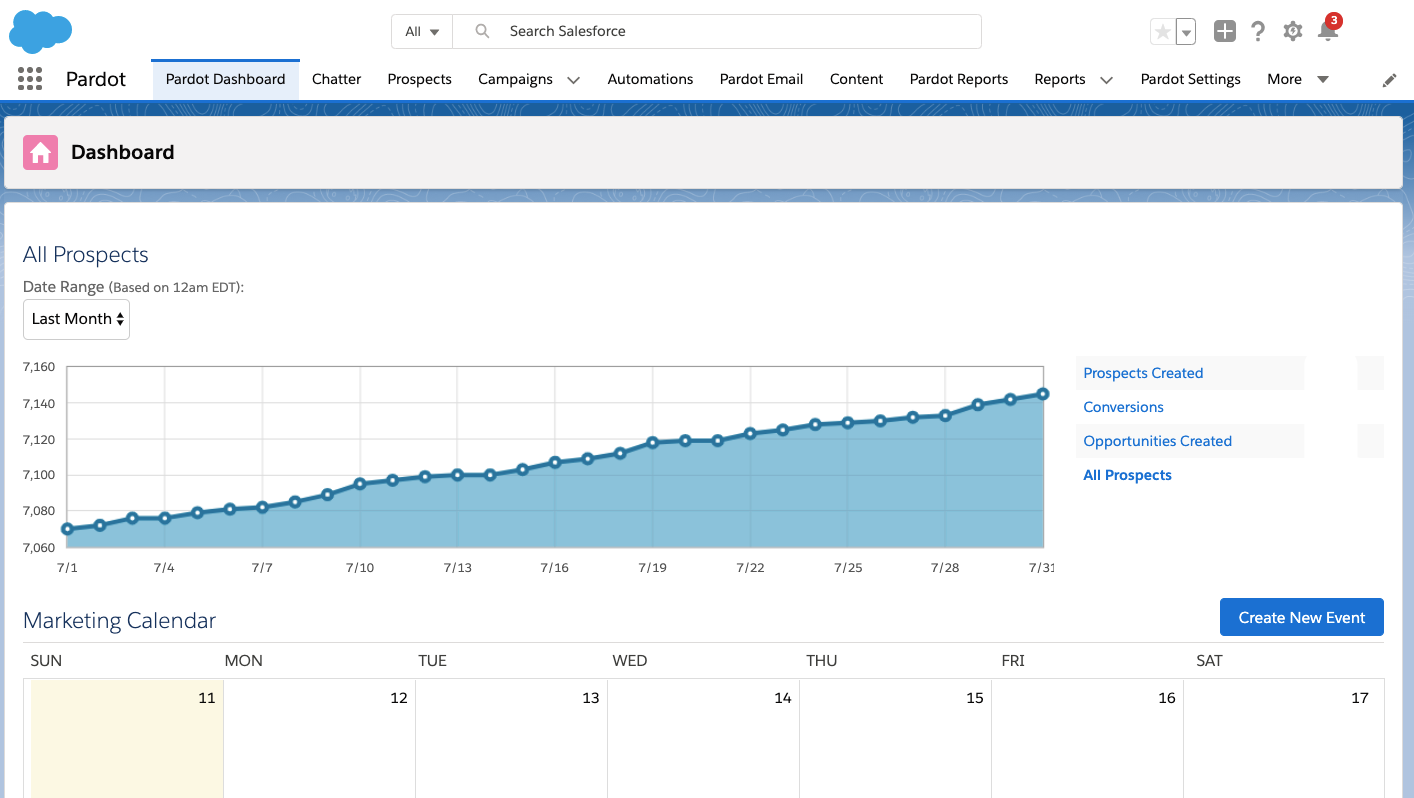

MailChimp’s navigation has always been scaled down – a big selling point! The navigation and structure are very much influenced by how segmentation capabilities work…which we will dive into in the next section.
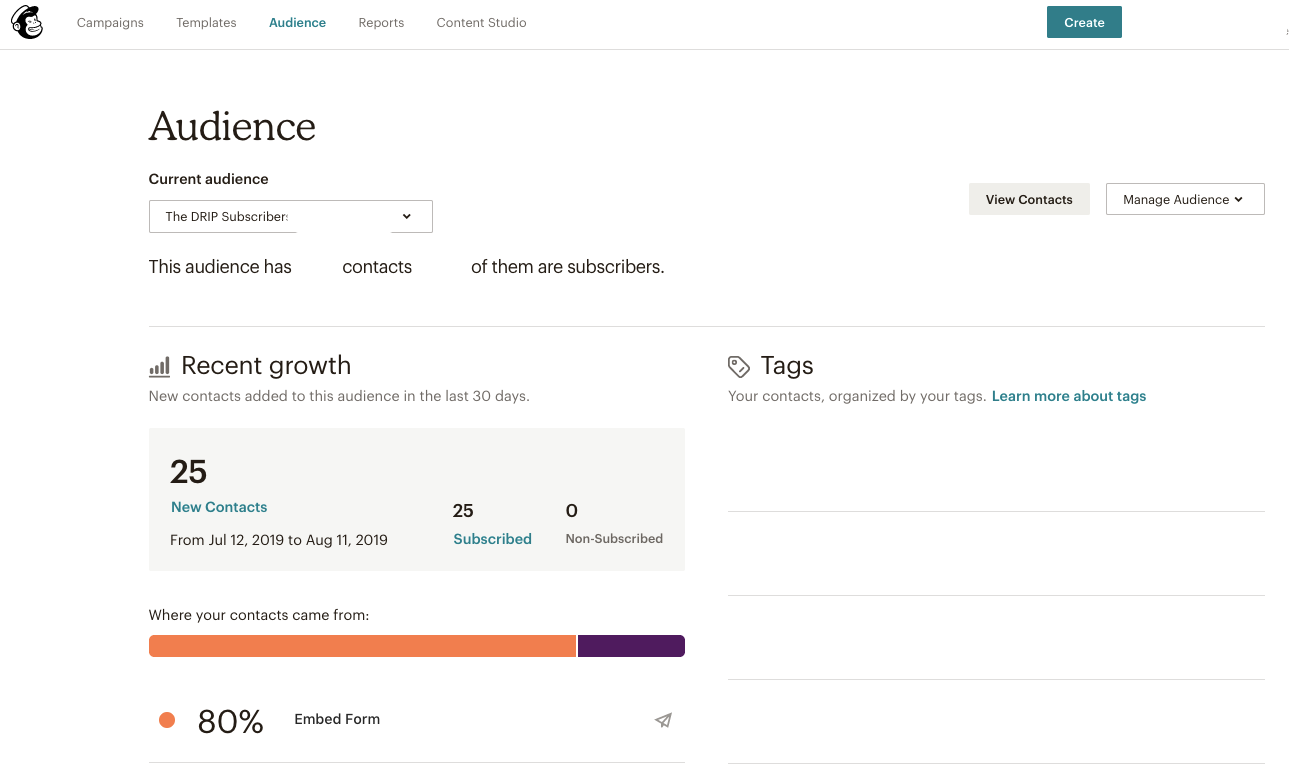

Image: Mailchimp Audience Dashboard
It’s worth highlighting that Mailchimp has a nice mobile application, where you can access reporting and pause/activate campaigns; it may be a deal-breaker for you if want instant access in case you can’t get to your laptop!
Segmentation
As I mentioned above, the structure and navigation are tightly aligned with how MailChimp segmentation works. The new, revamped platform focuses on ‘audiences’, that is, segmented subscribers, stored in a list. This requires a rewiring of how you think when switching between the two tools, as a subscriber can only exist in one audience, but the same individual can exist as a subscriber in two audiences; on the other hand, a Pardot prospect can exist in as many lists as required. In short, MailChimp is audience-focused, where individuals (‘subscribers’) are created belonging to a specific audience; whereas Pardot is individual-focused (‘prospects’), where individuals can exist in multiple lists.
| MailChimp: | Pardot: | |
| Criteria Limits | You can layer up to 5 criteria for a segment. (The MailChimp for Salesforce Query Builder might allow more.) |
Unlimited number of segmentation criteria |
| Automatically Updates? | Yes | Segments made in Dynamic Lists update automatically |
| Qualification | ‘Advanced segmentation’ “apply combinatorial logic to customer data you’ve collected like purchase activity, gender, age-range…” |
Scoring (behavioural) and Grading (demographic) are kept separate in Pardot |
| Out-of-the-box Segments | Ready-made segments, such as contacts that rarely open emails. | Possible, but have to DIY (do it yourself). |
Interface: Email Builder
Email is core to marketing automation, and so, the email builder this is where marketers spend a significant amount of time. There are notable differences in the Email Builders that should not be ‘swept under the rug’.
MailChimp is well-known for its Email Builder, the ultimate no-code email building experience. Templates are available out-of-the-box for specific use cases, such as a product showcase, or for story-telling. It works on a content-block basis, where marketers can drag and drop components onto the email canvas, including buttons (you can see the full range in the image below).
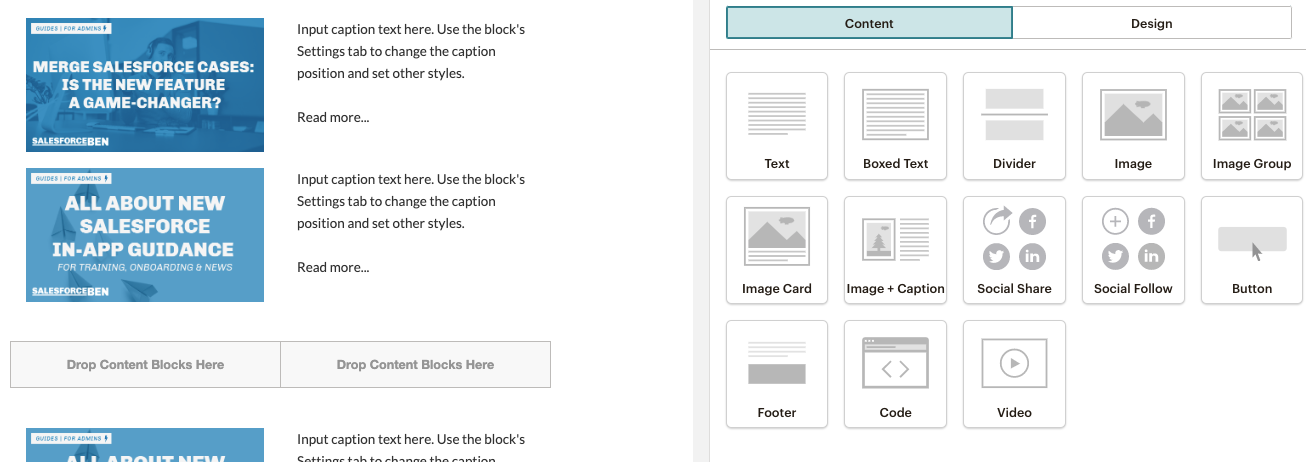

Pardot’s Email Builder does have a low-code mentality; double-clicking on a section will open up the editor, and there are section ‘tags’ to duplicate or move sections up or down. Marketers may find they need to jump into the source code for custom styling. Word on the grapevine is that revamping the user experience is a roadmap focus.


The built-in ability to test how emails will display across multiple devices and browsers* is a notable plus point of Pardot, whereas MailChimp doesn’t always honestly render styling such as custom fonts, and has been known to leave marketers in the dark.
(*powered by Litmus).
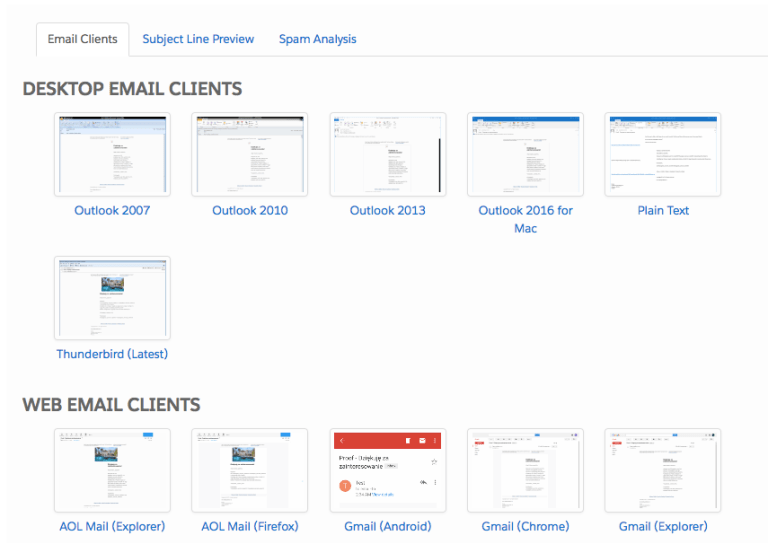

Personalisation
I won’t go into the usual personalisation features that are common to both, such as merge tags – but there is one content feature that Pardot does have on Mailchimp: Advanced Dynamic content. This feature allows you to create content blocks that can be embedded on Pardot forms, landing pages, emails, and websites, to automatically personalise what’s displayed for each prospect.
Interface: Campaign Automation
In MailChimp, you can get up-and-running with sending automated email sequences rapidly. These campaigns can be triggered based on a number of options in the menu, such as a new subscriber to your audience, or a triggered action or based on a segment.
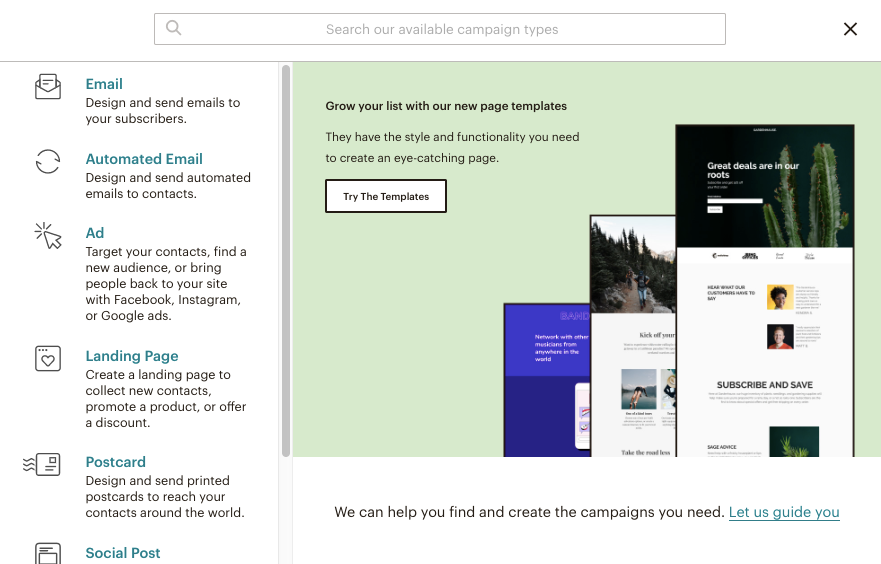

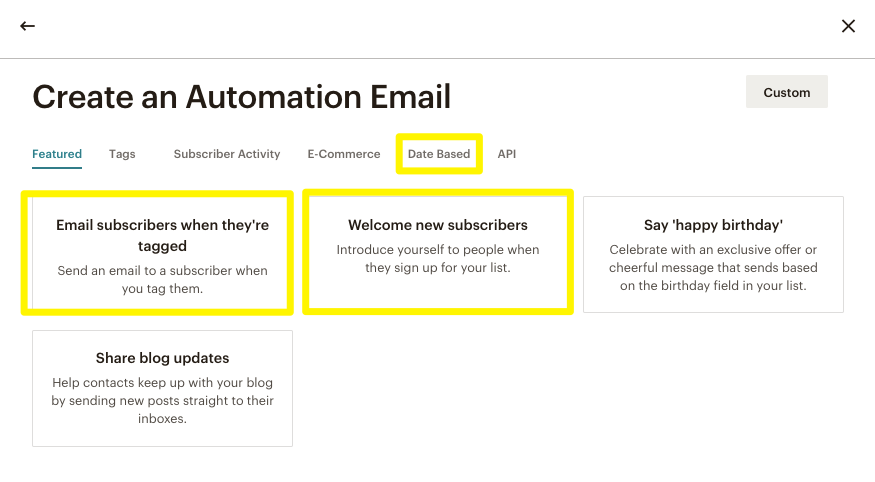

On the automated campaign screen, you can add emails to the sequence (see image below). For each email, you can define the:
- Trigger, eg. “Immediately after contacts subscribe” (there are many options!)
- Schedule
- Segment/Tags
- Post-send action
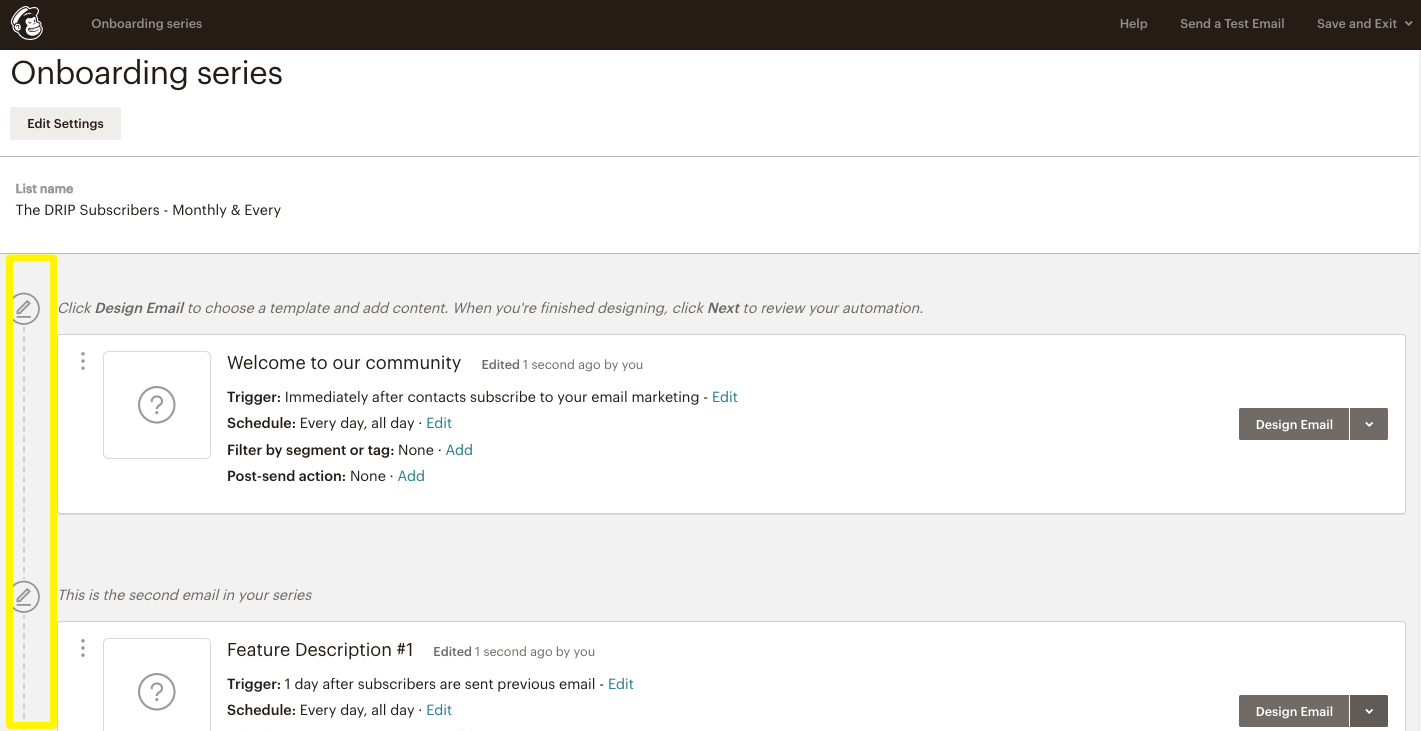

Pardot Engagement Studio is Pardot’s flagship feature; a canvas where marketers can visually map out their campaign flow, and pull together actions, triggers, and rules into one view. Branching logic makes clever campaign automation possible, reacting to prospects differently depending on their level of interaction with marketing content. Salesforce side functionalities are also accessible from Engagement Studio, such as assigning a lead to a team, adding to a Salesforce Campaign, or creating a task for a Salesforce user. Marketers love the control and clarity Engagement Studio gives them, explaining exactly where prospects are in their own journey throughout the campaign.
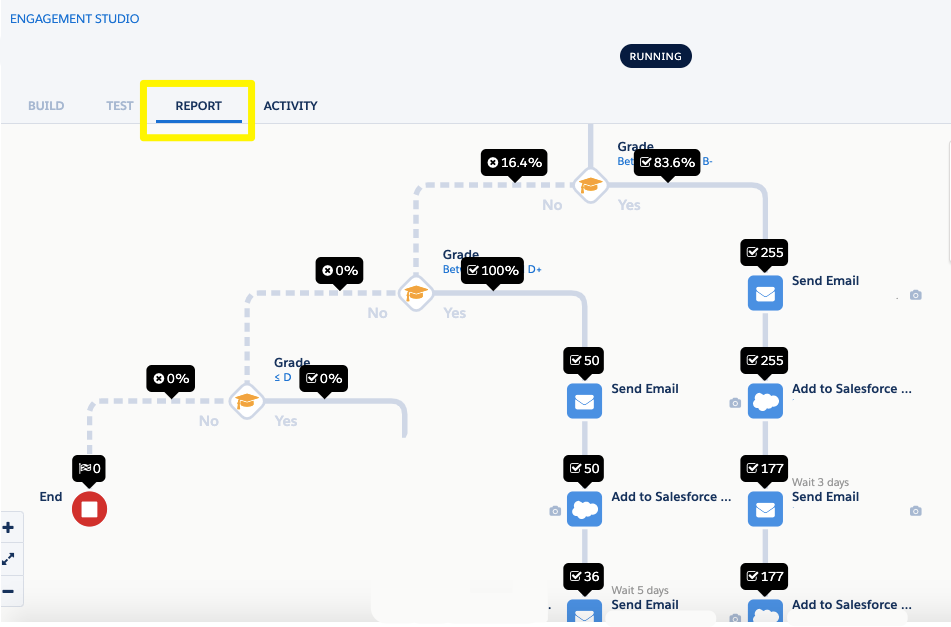

Image: Engagement Studio, Pardot’s flagship feature.
Reporting
Here’s a brief rundown of the reporting options with each.
MailChimp:
- Email Engagement over time (opens & clicks)


Image: MailChimp Campaign dashboard
- Email Engagement per 24 hours (opens & clicks)
- Automation, Comparative, Landing Page, Facebook ad, and Google ad reports.
Pardot:
- Sent Email Report
- Engagement Studio Reporting
- Marketing Assets Reporting on Salesforce Campaigns (eg. emails/forms/landing pages).
- Engagement History Dashboard (new!)


Image: Pardot sent email report


Image: Reporting in Engagement Studio
Both systems can leverage Salesforce Campaigns for reporting too, which will show the Campaign History of a Lead/Contact.
Engagement History Dashboard
The integration with Salesforce has deepened, meaning that not only Lead/Contacts can be associated easily to Salesforce Campaigns, but this has extended to Pardot marketing assets too! The combination of Prospect and Asset sync means the reporting has improved dramatically. The Engagement History Dashboard is an out-of-the-box Lightning Component that can be added in less than 15 minutes (excluding a wait of up to 24 hours). It became available on Campaigns in the Summer ’19 release, and will be available on Accounts in the Winter ’20 release.
Pardot have another card to play in their hand: B2B Marketing Analytics. This Einstein Analytics product takes Pardot datasets, and pulls it in the analytics tool for visualisation and discovery. Pardot customers* get 5 dashboards included: Account-based Marketing (ABM), Multi-touch Attribution, Marketing Manager, Engagement, and Pipeline.
(*on the Advanced edition, or as an add-on for Plus)


Salesforce Integration
Before we dive into the Salesforce Integration, it’s a good time to discuss the unique identifiers across Pardot and Mailchimp. A unique identifier is the piece of information the system uses to identify an individual, and therefore, how it determines which activity belongs to who.
MailChimp, like the majority of marketing automation platforms, uses email address as the unique identifier. Two years ago, Pardot switched their unique identifier to be CRM ID (known as AMPSEA). In practice, this means that each contact or lead in Salesforce will have a related Prospect record for marketing, often a non-negotiable requirement for businesses that ‘deliberately duplicate’ leads/contacts for data visibility restrictions. If email address is the unique identifier, one record will exist for that email address, and any subsequent records with the same email address will be ignored by Mailchimp, considered as duplicates.
Similarities
What the Pardot Salesforce Connector and the MailChimp for Salesforce Connector share in common:
- Price: are free
- Existing Records: Sync Prospects/Subscribers to Salesforce Leads/Contacts
- New Records: will create new Salesforce Leads if no matching Leads exist.
- Field Mapping: similar interfaces


Differences
- Sync Frequency: Pardot syncs every 2-4 minutes; Mailchimp syncs Salesforce data hourly.
- Visibility: Mailchimp data is visible through Visualforce sections that can be added onto Lead/Contact page layouts; this used to be the same for Pardot, until Lightning updates bought the ‘Engagement History’ component along.
- Opportunities: you can sync Salesforce Opportunity data to Pardot
- Custom Objects: you can sync records from your Salesforce custom objects to Pardot.
- Person Accounts: I don’t believe Mailchimp can sync with Person Accounts to the same degree as Pardot
- Automated Actions: can leverage more Salesforce-side actions from within Pardot, eg. assigning a lead to a team, adding to a Salesforce Campaign, or creating a task for a Salesforce user.
- Connected Campaigns: have aligned Pardot and Salesforce Campaigns to such an extent, that even Marketing Assets (emails/forms/landing pages) can be synced to Salesforce.
Skill Level
Both Pardot and MailChimp lead with a WYSIWYG interface, designed for all functionality to be accessible with ‘clicks-no-code’. This means that no heavy-technical experience, such as coding skills, is required.
However, Pardot does have a learning curve, because it demands a higher skill level. This is due to a number of reasons:
- It offers more flexibility in building campaigns
- (and so) there’s often more than one way of doing something; therefore, awareness of how to build with ‘best practice’ is necessary.
- Its connection with Salesforce means you will be leveraging many more Salesforce features (a feature-heavy CRM).
Pardot pros are recommended to take the Pardot Specialist Certification, and the Pardot Consultant Certification is expected for those ‘solutionizing’ Pardot beyond day-to-day campaign execution.
Here’s some info on what would be expected in each of the certification exams:
Pardot Specialist Certification Guide & Tips
Pardot Specialist Mock Exam Launch – how to pass first time!
Pardot Consultant Certification Guide & Tips
Price & Database Costs
- MailChimp starting price: $0/month – Premium starts at $299/month, a more realistic option for businesses.
- Pardot starting price: $1250/month, simple pricing model with 3 editions that include different features.




Both tools are priced with a database limit, with the package price increasing if the limit is exceeded.
- MailChimp: first 500 contacts free*. Additional 5000 contacts causes the price to go up – this calculator will tell you exactly. 100,000+ contacts requires the Premium edition.
- Pardot: first 20,000 ‘prospects’ included. You can purchase further storage in blocks of 10,000 prospects.
*on the free version, the first 2000 contacts are free!
Let’s not forget that as Pardot customers are buying a single vendor (Salesforce), they can frequently benefit from a generous package in combination with their CRM licenses.
Summary
Deciding on an email marketing tool in a crowded Marketing Automation landscape can be daunting. I hope that this post has helped by outlining the main differences, functionality, integration with Salesforce, and the typical customers they attract.
Overall, I would say that Pardot is a tool for marketers looking to mature their marketing and take the next step, due to the potential the connector with Salesforce has now, and what’s in store for the future.
By the way… I don’t intend to simplify your evaluation process. You should not make brash buying decision purely based on these observations. Instead, go into the evaluation with your mind clear on the differences, and what factors you should be considering!
Comments: